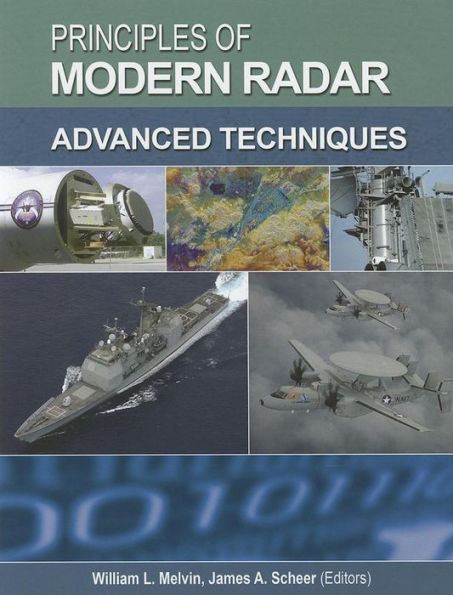Principles of Modern Radar: Advanced techniques
This second of three volumes in the Principles of Modern Radar series offers a much-needed professional reference for practicing radar engineers. It provides the stepping stones under one cover to advanced practice with overview discussions of the most commonly used techniques for radar design, thereby bridging readers to single-topic advanced books, papers, and presentations. It spans a gamut of exciting radar capabilities from exotic waveforms to ultra-high resolution 2D and 3D imaging methods, complex adaptive interference cancellation, multi-target tracking in dense scenarios, multiple-input, multiple-output (MIMO) and much more. All of this material is presented with the same careful balance of quantitative rigor and qualitative insight of Principles of Modern Radar: Basic Principles. Each chapter is likewise authored by recognized subject experts, with the rigorous editing for consistency and suggestions of numerous volunteer reviewers from the radar community applied throughout. Advanced academic and training courses will appreciate the sets of chapter-end problems for students, as well as worked solutions for instructors. Extensive reference lists show the way for further study.
1118727102
Principles of Modern Radar: Advanced techniques
This second of three volumes in the Principles of Modern Radar series offers a much-needed professional reference for practicing radar engineers. It provides the stepping stones under one cover to advanced practice with overview discussions of the most commonly used techniques for radar design, thereby bridging readers to single-topic advanced books, papers, and presentations. It spans a gamut of exciting radar capabilities from exotic waveforms to ultra-high resolution 2D and 3D imaging methods, complex adaptive interference cancellation, multi-target tracking in dense scenarios, multiple-input, multiple-output (MIMO) and much more. All of this material is presented with the same careful balance of quantitative rigor and qualitative insight of Principles of Modern Radar: Basic Principles. Each chapter is likewise authored by recognized subject experts, with the rigorous editing for consistency and suggestions of numerous volunteer reviewers from the radar community applied throughout. Advanced academic and training courses will appreciate the sets of chapter-end problems for students, as well as worked solutions for instructors. Extensive reference lists show the way for further study.
200.0
In Stock
5
1

Principles of Modern Radar: Advanced techniques
872
Principles of Modern Radar: Advanced techniques
872Hardcover
$200.00
200.0
In Stock

Product Details
| ISBN-13: | 9781891121531 |
|---|---|
| Publisher: | The Institution of Engineering and Technology |
| Publication date: | 10/16/2012 |
| Series: | Radar, Sonar and Navigation |
| Pages: | 872 |
| Product dimensions: | 10.20(w) x 8.30(h) x 1.50(d) |
About the Author
From the B&N Reads Blog
